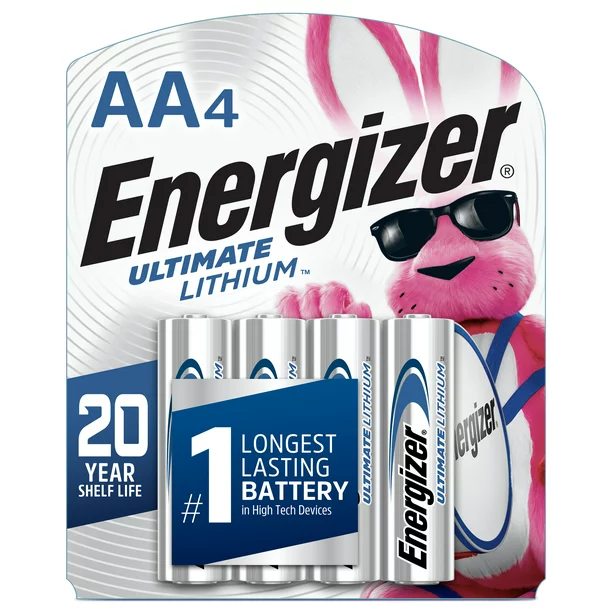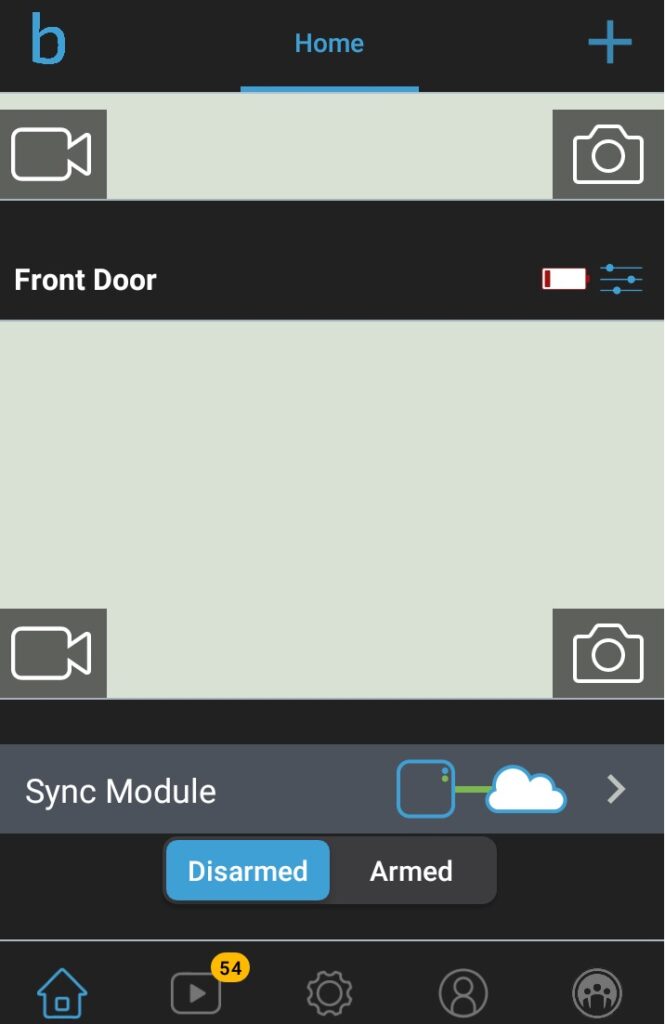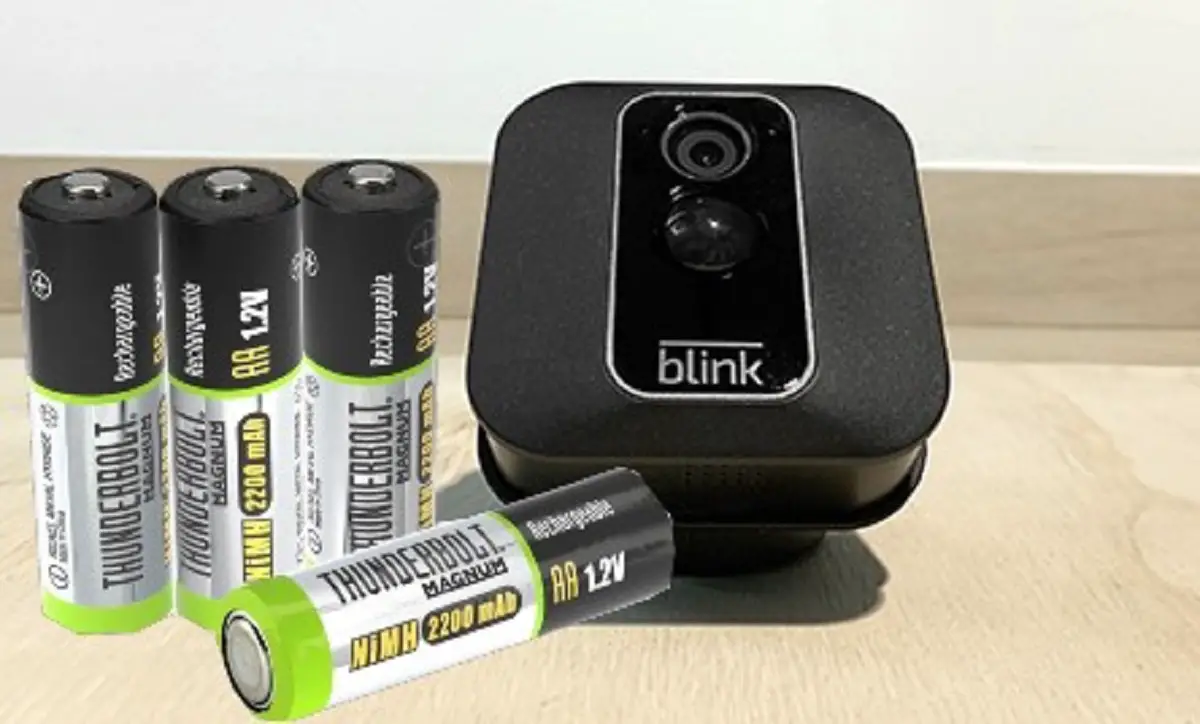Yes, you can use rechargeable NIMH batteries in your blink camera but expect to swap them out often.
Note: I own and use first gen Blink XT cameras
If you own and use Blink security cameras, for what they are, an affordable, wireless security camera option, they are great.
But, several months in, you’ll soon realize one of the few of the Blink Cameras flaws, Blink not only recommends Lithium Ion batteries, they say you have to use Energizer Ultimate Lithium AAs exclusively.
I have no complaints about the Energizer Ultimate Lithium’s performance, they are the best non-rechargeable AA battery on the market by far and last a super long time in these Blink cameras.
On a heavily used front door camera that gets 10+ notifications at 15-seconds long a day, Energizer Ultimate Lithiums lasted up to three months before I needed to swap a fresh pair in, and that’s with several battery-sapping live view sessions a week.
My gripe is these recommended Energizer Lithiums are expensive!
As of this blog post, a pack of 8 Energizer Ultimate Lithiums at Walmart is $23.98 (or $3 per battery.)

I have a front door and front garage camera that gets the most use and if I changed those cameras out every three months, I’d need 16 AAs a year which, if I replaced them with Energizer Ultimate Lithiums only would be at least $50 worth of batteries.
I also have an indoor, side of house, and backyard camera that use Energizer Ultimate Lithiums but those don’t get nearly as much use and honestly last at least 9-12 months before I get the “change batteries soon” notification.
Curious, I googled around and found out that some Blink camera users went rogue and have been experimenting with non-Energizer LI’s, rechargeable LIs, and even Rechargeable NIMHs.
With the pandemic in full swing, me stuck working from home several months, and curious if I could get away with Rechargeable NIMHs myself, I went ahead and purchased a handful from Harbor Freight and this is what I found.
AA High Capacity NiMH Rechargeable Batteries in Blink Cameras
As of this blog post (4) HF Thunderbolt Magnum AAs cost $7.99. I bought two packs because I have a rechargeable everyday carry flashlight that I need, too.
The NIMH battery charger was $5.49.
I was in $21.47 before tax.
So, how did they perform?
When fully charged, the Energizer Ultimate Lithium AA is rated at 3500 mah.
In comparison, these Thunderbolt Magnums are rated at 2,200 mah per AA, so, no kidding, these weren’t going to last as long.
I put charged NIMH AAs in my front door cam and garage cam and this is how many days they lasted.
- Front door cam- 29 days
- Garage cam- 34 days
That’s with medium to heavy- amounts of triggers/notifications a day and, with a so-called dumb charger with no indication that I reached 100 percent charge. I’d guesstimate they were at 85-90 percent charge when I put them in.
So, yes, rechargable NIMH batteries work in these Blink Cameras, at least the XT gen, for up to a month.
YMMV if you have an XT2 or newer.
There are several things I noticed.
First, with NIMH batteries your blink app will show your batteries are just about dead all the time, if you go for the rechargeable NIMH route, you’ll have to live with that.
This is what my blink app with NIMH batteries look like.

Next, when your cameras start acting up, like they no longer trigger when other cameras are, your videos at night look weird, etc, that’s when your batteries need replacing.
If you’re familiar with the discharge rate of NIMH batteries, they hold a certain voltage for the duration of their use and quickly drop in voltage as you get nearer to the end of its useful charge life
According to this blog post from Stefan V,
“A NiMH battery starts out at about 1.2V (it actually starts at about 1.4V, but drops to 1.2V almost immediately), but as it discharges, the voltage remains relatively constant, dropping only to about 1.1V just before the battery is fully depleted.”
This chart linked here illustrates that.
My charging strategy would be, when I notice my blink cameras are acting up and need fresh batteries ASAP, I’d pop in a pair of depleted NIMHs to charge overnight (per the charging instructions) and, the next day I’d swap in a fresh set.
I can see myself writing down the dates when I took out and popped in charged NIMHs and pre-emptively swapping in a freshly charged set perhaps 3.5 weeks into use (with a few days of battery left,) but I guess I take the risk of not having a charged blink camera for half a day while a fresh pair charges.
For my use, checking when my packages arrive, seeing who passes into a property area, and observing when my family leaves and comes back, rechargeable NIMHs work for me.
Conclusion
Rechargeable NIMHs work fine for me and, if you pony up, rechargeable Lithium Ion AAs would be even better.
A quick peek on Amazon shows they have MAH capacities in the 3300 MAH range.
Perhaps I’ll switch to rechargeable Lithium Ions for my blink cameras, soon, but, for now, I’m fine with recharging my NIMHs and swapping them in when I need to.
If you absolutely need the performance of Non-rechargeable Lithium Ions, have bad knees and can’t climb up a step ladder to swap batteries, or are turned off the idea of changing out batteries every month, rechargeable NIMHs in your blink camera is probably not for you.
But if you’re keen on the idea of never paying for Energizer Ultimate Lithiums ever again, rechargeable NIMHs (or rechargeable Lithium Ions) might be for you.
And, while my rechargeable NIMHs only lasted a month when used in my heavily trafficked cameras, if you have a Blink camera that only is occasionally activated, like a side of the house or backyard camera, rechargeable NIMHs will obviously last a lot longer.
